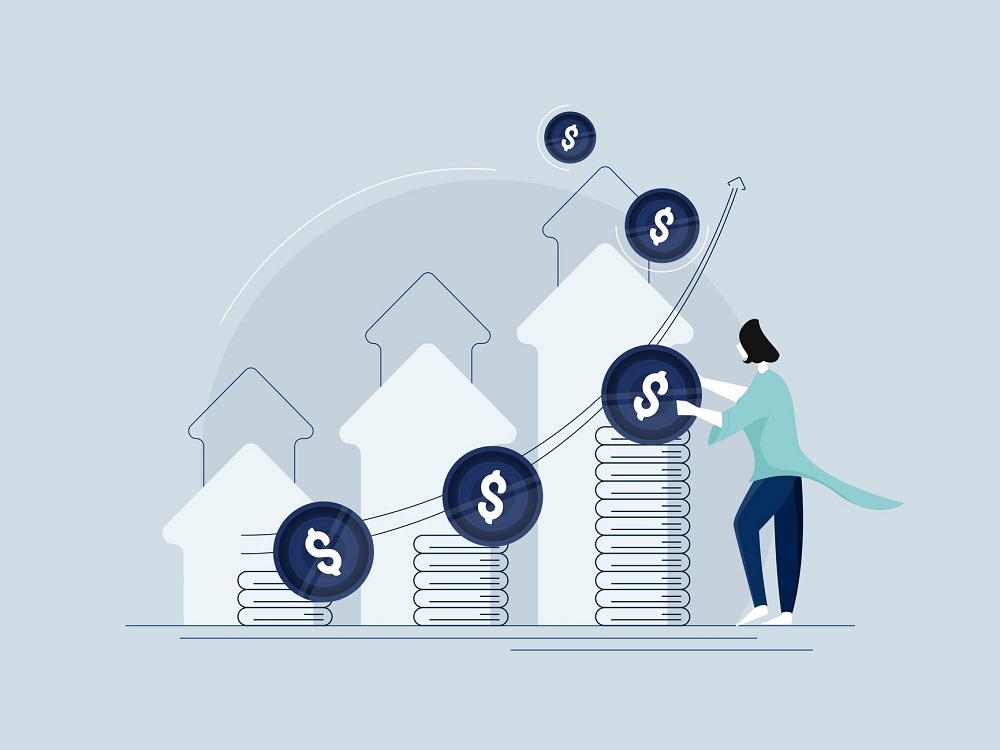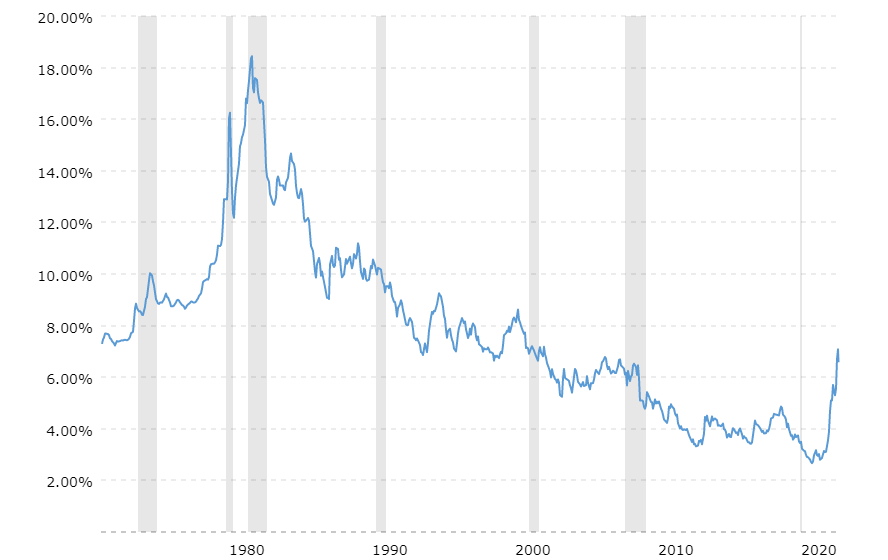 It seems like everyone is talking about interest rates these days, and with good reason. The Federal Reserve Board, which sets interest rates for overnight funds loaned to banks or between banks, is talking about increasing the Federal Funds Rate to tame inflation. What does that mean for mortgage rates?
It seems like everyone is talking about interest rates these days, and with good reason. The Federal Reserve Board, which sets interest rates for overnight funds loaned to banks or between banks, is talking about increasing the Federal Funds Rate to tame inflation. What does that mean for mortgage rates?
How can the interest rate tame inflation?
As the Federal Funds Rate changes, it directly impacts the cost of borrowing money in many scenarios. For consumers, it affects variable rate products, like credit cards or some lines of credit. It becomes more expensive to get a car loan or a student loan. If consumers can’t spend as much, demand for products will fall, and the rate of price increases – inflation – will drop as well.
The same is true for businesses. As the cost of borrowing money grows, expansion becomes more expensive. Couple that with lower demand for their products, and businesses may have to cut staff. As more people lose their jobs, demand falls further, and inflation cools more.
The Federal Reserve Board’s challenge is to slow the economy enough to cool price growth while avoiding a full-fledged recession and devastating unemployment.
Does the Fed set mortgage rates?
Mortgage rates are not controlled by the Federal Reserve Board. They are controlled by investors who purchase mortgage-backed securities. However, mortgage rates typically move parallel to the Fed Funds Rate. Often, mortgage rates will rise in anticipation of a move by the Federal Reserve Board. When the media reports that the Fed has raised interest rates, it’s likely the increase has already happened in the mortgage market.
How do rates look now compared to years past?

The Fed Funds Rate and mortgage rates in November 2022 are higher than they’ve been recently, but lower than the typical rate over the last 50 years or so.
Just as the Federal Reserve Board raises interest rates to slow down the economy and tame inflation, when things are bad, it lowers rates. This occurred from about 2008 through about 2015, so mortgage rates were relatively low during that time. The Fed began normalizing rates with periodic increases around the end of 2015, continuing through 2019.
Then came 2020. When the pandemic hit, the Fed slashed the Fed Funds Rate almost to zero in an extraordinary effort to keep the economy going through shutdowns. The current increases are an attempt to get things back to normal again.
So how high have rates gotten?
In 1981, the rate for a 30-year fixed rate mortgage hit an all-time high of 18.45%! Rates came down but stayed relatively high through the decade. They moved into the high single digits in the 1990s.
The early 2000s saw mortgage rates mostly in the 5% and 6% range, then they dropped to a record low of 3.35% near the end of 2012. For the remainder of the decade, they mostly stayed below 5%. Then, after the pandemic rate cuts, mortgage rates hit a new record low of 2.65% in January 2021. The 50-year average for the 30-year fixed rate mortgage is around 7.5%
What does the current rate environment mean for today’s buyers?
Rates will likely rise before they fall. The Federal Reserve Board has indicated they will continue raising the Federal Funds Rate until inflation is tamed. Some economists think we could see increases through much of 2023, though the pace of those increases may slow. Now may be a good time to lock in a rate.
It’s not worth waiting for a low rate. Looking at rates over the years, it’s clear that they shift. While it’s important to be able to afford a home at the rate you get today, it’s also good to remember that you can refinance when rates drop. Homeowners in every decade have done the same. Meanwhile, you can begin taking advantage of other homeowner perks, like tax savings and home value appreciation.
Waiting until prices drop may be pointless. The cost of purchasing a home is rising along with interest rates, so it’s true that demand will likely cool. This could bring prices down. However, before rates started rising, the market had become very tight with limited supply. Even with higher borrowing costs, there’s still a backlog of buyers who could not get into homes before. It’s unlikely demand will fall to a level that drastically impacts prices. In other words, waiting until prices fall to purchase a home may not pay off.
If prices remain steady, so do home values. Home values are based on the prices consumers are willing to pay. That means the home you purchase today is likely to be a sound investment, appreciating in value over time, just as real estate has done over the last 50 years.
Lenders have safe, proven programs to help buyers get into homes at current rates. From hybrid adjustable-rate mortgages that start with a lower rate before adjusting to a fixed rate, to points used to buy down interest rates, lenders can offer options. It’s worth talking to one before shutting yourself out of a home based on a fear of rising rates.
Our experienced staff and preferred lenders stand ready to help you get into the home you want today. Visit www.sahomebuilder.com or call us at 1-855-SAHome1.
